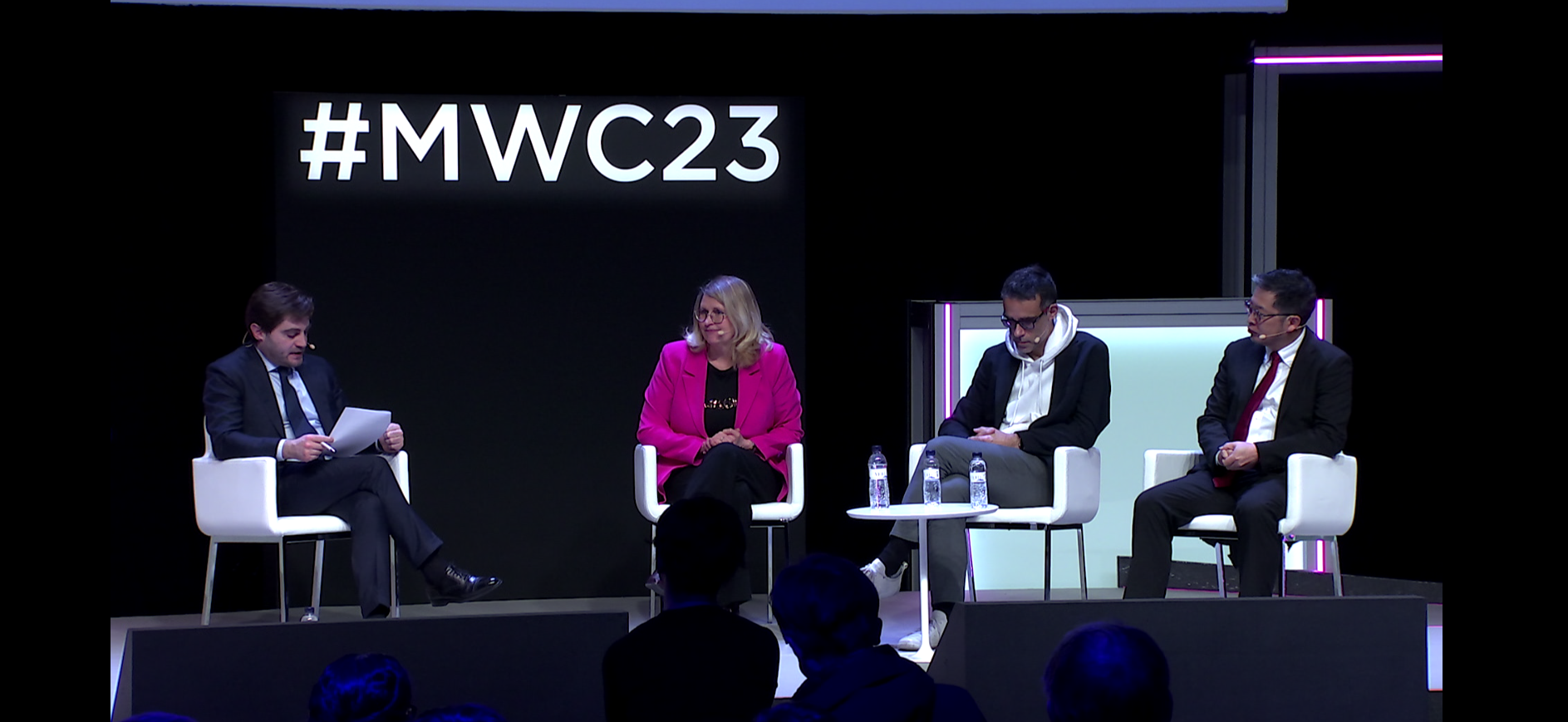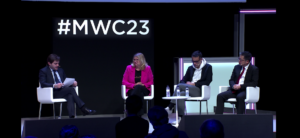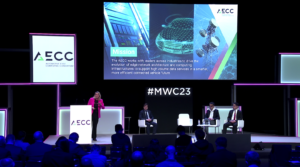To The Edge and Back: Mobile World Congress 2023 Panel

Investing in a Smart and Connected World to Drive the Edge Computing Era
Last month the AECC journeyed to Barcelona for Mobile World Congress 2023, one of the largest and most influential events in the connectivity industry. It was great to be back in person for the first time in three years. The technology was entertaining and inspiring, and the excitement on the show floor was palpable.
While there, the AECC hosted a panel, “A Smart and Connected World in the Edge Computing Era,” that explored the state of the connected vehicle service ecosystem, the importance of uniting collaborators across industries to build out the network, and the actionable steps we need to take to make a more connected future a reality. The panel was moderated by GSMA analyst Pablo Iacopino, who was joined by AECC members Muriel Desaeger, Technical Head, Technology Planning at Toyota Motor Europe, Bruno Fernandez-Ruiz, CTO and Founder of Nexar, and Yoshinori Kitatsuji, GM of Social Implementation Office at KDDI.

Throughout the thirty-minute panel, Pablo asked the panelists a series of questions about the use of the mobile network, cloud, and edge computing in scaling the connected vehicle market, the opportunities that stem from the creation of massive amounts of connected vehicle data, and what needs to be done at the ecosystem level to scale edge technology in automotive. Below are a few excerpts from the discussion, and the full panel is now available on our site.

Pablo: The connected vehicle market is growing significantly. Why is the use of networks – cloud and edge, as well as the integration of the two – more important than ever before?
Muriel: There is really a change happening. The fact that the car can be connected opens the door to many applications, but most of them require a lot of data, and having the data go to the cloud and not a local spot might not be cost-effective. And we may lose a bit of control over privacy in that situation. So, in that sense, having the edge is critical for us. At the same time, while a car can drive all over, some info is needed only locally, so the local aspect is super important and the edge provides a solution for this.
Bruno: I think applications for automotive should be the key application that telcos should be focusing on right now. The cars that existed ten years ago were single-player cars – you just got in, turned the key and drove. Nowadays, to drive safely you have what is called level two or level three automation in the vehicles, and you don’t want the car to be the last one that knows. So you have not just telemetry data, but sensors that exist in the car that are…generating intelligence that will be useful for everyone around it. And that’s critical to share because otherwise, we are not going to reach that level of automation safely on the roads.
Yoshinori: For example, data that are maintaining the cars is very important I think at this moment. Let’s think about Tesla…software in the car is updated many times a month, and they noticed that the current vehicle status also characterizes the behavior of the software. Current version software… is used for understanding the poor behavior of any functions or including new functions to the cars. That’s why for current car automakers, communication is important.
Pablo: Now let’s go deeper into the network infrastructure discussions. The connected vehicle services market will transfer huge amounts of data to the edge cloud each month – more than the networks can manage. So, building out the network is super important. What should operators do more to drive edge deployments in automotive and who should contribute to making these investments?
Muriel: The benefits to all these new services will be for a lot of industries and also for cities as well…So, we are doing a good job with operators. It’s important that we continue to understand each other, but also it’s important to bring in all the other players of this ecosystem because the others also have knowledge of AI, knowledge on the way regulators can be approached, and knowledge about how a country is moving. So…we need to continue with operators, but it’s very important that we enlarge to all players because all of them will have a critical element in this…
Pablo: Let’s conclude by making a prediction about edge computing for automation in 2023.
Muriel: What is critical for us at the moment is seamless connectivity because we want to provide [a seamless driver experience]. That’s critical for us and is a priority, as [is working] on the service resilience. What do we need at what time and how do we [ensure] that resilience for that specific service is established and continuously there? Those are the two critical elements for the coming months or years.
Bruno: For 2023, what I would like to see – and I think we’re close – is moving cloud workloads…to things that are running on little data centers close to the cars. I think the main thing we’re going to see there is Kubernetes as a technology coming into the car itself and to the edge…I think this is happening this year, this isn’t five years from now.
Yoshi: I expect to see an increase in charging spots. That is necessary for cars, and data is collected from the cars, and this leads to edge computing sites, so I expect we’ll see an increase there.
Check out the video for the whole conversation, and follow us on LinkedIn and Twitter to stay up to date.
